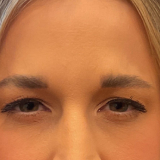Contents
- 1 How Safe is Tummy Tuck Surgery for an Obese Person?
- 2 Which Tummy Tuck is Ideal for Obese Individuals?
- 3 Have You Performed a Critical Case of Tummy Tuck Surgery for an Obese Patient?
- 4 Apart From BMI as a Factor, What is to be Considered for Obese Tummy Tuck Surgery?
- 5 What is the Most Serious Side Effect of Tummy Tuck for Obese Patients?
- 6 What are the Pre-Operative & Post-Operative Guidelines to Follow?
How Safe is Tummy Tuck Surgery for an Obese Person?
Tummy Tucks, also known as abdominoplasty, can be a very safe procedure when performed by a Board-Certified plastic surgeon. There are certain risks in terms of wound healing issues, DVT, and blood clots that can be unique to tummy tuck patients. Certain factors, such as obesity, may increase these risks. In general, patients who have lost a lot of weight and have an excess amount of skin tend to be very good candidates for a tummy tuck. And they tend to be extremely happy with results. It is important to remember a tummy tuck (abdominoplasty) procedure is not a weight loss procedure, it is a body contouring procedure. Weight loss from a tummy tuck, even in obese patients, will be very minimal.
Which Tummy Tuck is Ideal for Obese Individuals?
There are several different types of tummy tuck procedures available to patients depending on the specific situation. We can start from the smallest incision, and work our way up to larger procedures:
A mini-abdominoplasty is typically a tummy tuck that is performed for patients that have a limited amount of loose skin, and that loose skin is limited to just below the belly button. This procedure can have a shorter scar and does not affect the belly button. A mini-abdominoplasty can include muscle plication (tightening of the muscles) for patients that have a diastasis of their muscles which can happen after pregnancy or weight loss, for example.
Next, would be a full abdominoplasty, or traditional abdominoplasty. This includes tightening of the muscles, removal of the skin from the belly button down to about the pubic hairline, and an incision that goes from hip to hip. This is the most common tummy tuck performed.
Circumferential abdominoplasty, or a body lift, is typically for patients that have a significant amount of weight loss. When patients have a significant amount of weight loss they have excess skin that affects the abdominal area, but also the back and buttock. The circumferential lift will address the skin laxity 360 degrees in patients (the incision also goes 360 degrees around patients.
A Fleur De Lis tummy tuck that is used in patients again that have had a significant amount of weight loss as well. This type of tummy tuck includes a vertical component. The patient will have the traditional hip-to-hip scar, but also can have a vertical incision that goes from the sternum down to that the pubic area. This type of tummy tuck is considered for patients who have a significant amount of excess skin across the abdomen (running side to side), and therefore would still have some skin laxity with the traditional tummy tuck. This gives the plastic surgeon the ability to remove more skin for patients in both a vertical and horizontal direction.
A panniculectomy is a type of tummy tuck that is typically done in patients that are having medical issues from their abdominal skin flap that cause wound healing issues such as; rashes, infections, mobility issues, or other types of medical issues. This procedure minimizes the risk for patients that are obese, and may have active other health concerns that are limiting the use of a traditional abdominoplasty. In general, it is designed to remove the excess “apron” of skin and adipose tissue that is over the beltline, to improve the medical issues that the patient is experiencing.
Have You Performed a Critical Case of Tummy Tuck Surgery for an Obese Patient?
In our practice, we have started pre-treating patients with the new Semaglutide medications prior to tummy tuck procedures. Patients in the past that had high BMI were often denied surgery, or had the surgery and suffered from prolonged wound healing issues.
The weight loss medications that have recently become available such as Semaglutide, Wegovy, and Mounjaro have created new opportunities for patients and plastic surgeons. We are truly able to make life changing treatments for patients. We will now start patients on these medications prior to their tummy tuck or Mommy Makeover, and help them reach their goal weight prior to their surgery. In several studies, patients have been able to lose up to 15% of their body weight on these medications.
Apart From BMI as a Factor, What is to be Considered for Obese Tummy Tuck Surgery?
BMI is not the only predictor of patients having complications or success with a tummy tuck. However, a higher BMI is associated with other medical issues that can lead to increased risks for complications after a tummy tuck. Other factors that we take into consideration are the overall health of an individual, and any history of heart disease or diabetes. Both of those can be a risk factor for general anesthesia and wound healing after the surgery. A patient with diabetes can do very well with an abdominoplasty, but we often work in coordination with their endocrinologist or primary care to make sure this is well managed prior to their surgery.
Smoking is another risk factor for patients and can contribute to wound healing issues after a tummy tuck. It is very important for patients to completely stop smoking or using any type of nicotine during the pre-operative and postoperative period when having an abdominoplasty, regardless of your BMI.
What is the Most Serious Side Effect of Tummy Tuck for Obese Patients?
Most commonly, obese patients who have a tummy tuck have some wound healing issues at their tummy tuck incision site. Tummy tucks in obese patients may put the patient at higher risk due to the increased adipose tissue, and the significant distance the abdomen needs to be advanced during a tummy tuck. This can put more stress on the body in terms of healing well after a tummy tuck. Also, patients with a larger BMI, will sometimes be more difficult to ambulate after surgery. They may also have a slightly higher risk of DVT blood clot. Again, all of these factors have to be taken into consideration when performing abdominoplasty, and using special methods and techniques to minimize these risks as much as possible.
What are the Pre-Operative & Post-Operative Guidelines to Follow?
Plastic surgery has a different pre-and post operative guideline prior to an abdominoplasty or a tummy tuck procedure. General guidelines are as follows:
Number one, patients are encouraged to be in their absolute best health prior to surgery. This includes control of any medical issues that they currently have. When planning your surgery, your plastic surgeon will work with your medical doctor to help improve and optimize your medical condition(s) prior to any surgery. One of the reasons that obesity is a risk factor, is that it typically puts people at risk for other medical conditions, such as diabetes, hypertension, heart disease, and any other medical condition or concerns.
Second, it is also advised that any patient considering a tummy tuck procedure, whether they are obese or not, refrain from any smoking or nicotine use at least one month prior to their surgery. This will optimize their wound healing potential.
At Austin Plastic Surgeon, we’ve evolved our preoperative guidelines for patients that have higher BMI. The semaglutide and other weight loss medications that have recently become available such as Ozempic, Mounjaro, Wegovy (the compound semaglutide), have revolutionized weight loss for patients in America. We’ve included these medications in our aesthetic treatments. All of our patients who have higher BMIs will be screened to see if they are good candidates for any of these weight loss shots. If so, we will start patients on the shots 6-9 months prior to their tummy tuck/abdominoplasty procedure to optimize results. It has been shown that if we can decrease their weight and BMI, pre and post operative risks decrease dramatically, and overall results will be improved. Not only do these newer medications cause weight loss, they may help treat patient’s underlying medical issues such as hypertension, diabetes, heart disease that surgery could never treat. This new, modern approach is an overall wellness approach for patients with higher BMI that are looking for a tummy tuck procedure. The combination of pre-treating patients with these weight loss medications, along with surgery, is an overall attempt to create lifestyle changes and, thus, promote significant change in patient well-being, lasting their lifetime. This is giving us an opportunity to really enhance patients’ overall health and well-being in every aspect. This is an opportunity in plastic surgery we’ve never had before, and I plan to take this opportunity to really enhance my patient’s overall well-being, and not just their appearance.
There are several guidelines patients should follow after undergoing major surgery. One thing patients should not neglect is making sure they give themselves enough time to recover. Most patients need 3 to 6 weeks off work for proper healing after surgery, depending on the strenuous requirements of their specific profession. Some patients that work from home may be able to return to work two weeks post-op. Other patients that have a much more strenuous profession may need a little bit longer. It generally takes patients about three months to be back to feeling their normal self in terms of their overall strength and mobility. Most patients may return to their normal activities at 4 to 6 weeks.
Patients also tend to underestimate the amount of assistance they will need postoperatively. Patients who do too much, too quickly can definitely set themselves back in terms of recovery, wound healing, and overall aesthetic result. Is important to make sure that there is proper assistance postoperatively to ensure proper healing.
It is also important for patients to have a plan in terms of proper nutrition after their surgery. Patients require more calories and protein during the healing process, and will need to prepare for this prior to their surgery.
In general, patients with higher BMIs will be at higher risk for complications including slower healing. There are several methods to help decrease this risk. The addition of the new Semaglutide and other weight loss medications have revolutionized how we treat patients with obesity that are in need of medical intervention such as a panniculectomy, tummy tuck, or other surgical procedure. This is going to continue to evolve and we are just scratching the surface of the opportunities to be able to enhance patients’ overall life, not only from an aesthetic appearance, but from an overall wellness perspective. These are some of the most exciting advancements in plastic surgery in the past decade.
Reach out to our team to learn more about tummy tucks and your specific procedure details.





